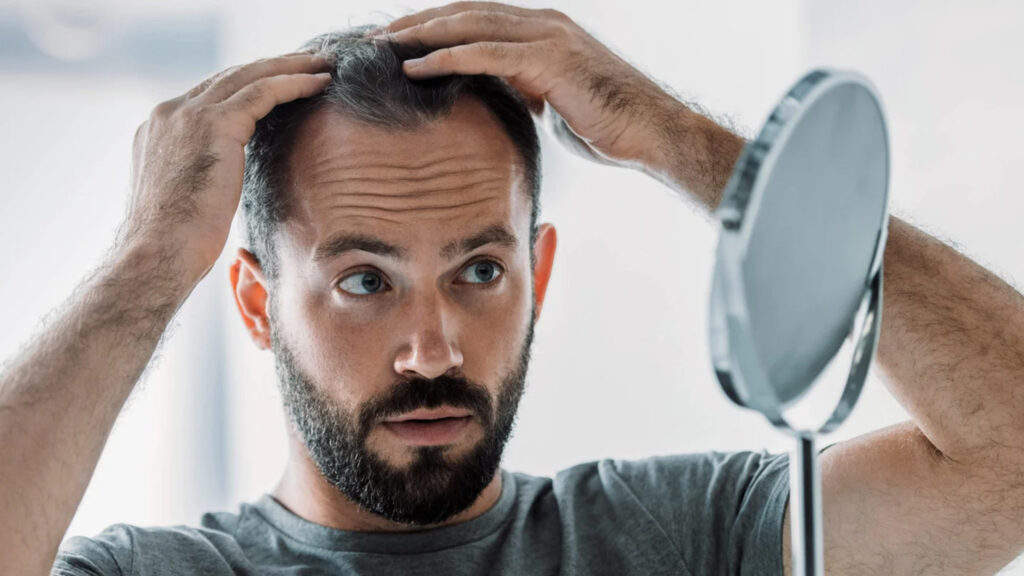In most people, the hairline provides them with one of the most striking facial characteristics. It positions your features, adds balance to your face and is a major element in determining how young and smart you look. However, when the hairline starts to recede, get thin or drop out of its original shape, it can cause a huge dent in confidence. A hairline transplant is most likely one of the most frequent methods, as this is a sort of solution needed to recover the density and natural shape of the front hairline. However, the biggest question that almost every individual has to ask before they book into surgery is the number of grafts it will take to complete an entire missing hairline. Not everybody has the same answer. It varies with the level of loss, your type of hair, your expectations of what you want and the method employed. It might sound confusing to you. Let’s clear up all your confusion. In this article, we will break down all you want to know about graft numbers, hairline surgery, hairline reconstruction and even the hairline transplant cost so that you can make a confident decision.
What Is A Hairline Transplant?

Hairline transplant is a kind of surgery that is specific to reshaping or reconstructing the frontal or overall hairline. Contrary to general procedures of hair restoration which can be applied on a large bald area, hairline transplant rests in precision, artistry, and an aesthetically natural look.
The hair follicles are taken out of areas that do not experience balding easily like the back or the sides of the head and then reapplied to the front hairline. What is aimed at is producing an age-appropriate and natural design that would serve as a fitting extension of your current hair code.
It uses two fundamental methods:
FUT (Follicular Unit Transplantation):
Tissue is taken out in a thin band of the scalp of a donor, and under a microscope they dissect out follicles and subsequently are implanted.
FUE (Follicular Unit Extraction):
Hair follicles are removed one after another and applied to the hairline.
This is why FUE hair transplant is now the most commonly indicated procedure in hairline work due to the fact that there is no straight scar left behind and the grafts can be carefully placed in a softer, more natural manner.
What are Hair grafts?
A hair graft is a natural cluster of one to four hair follicles. One graft has a tiny group of hairs and the number of hairs that each will possess will be based on your natural hair features.
In a hairline design, single-hair grafts are inserted directly at the very front of the scalp, to give it a feathered look. The first row includes two- to three hair grafts behind it in layers to thicken it.
What determines the Number of Grafts Required to have a complete hairline?
Some patients might require more than three thousand grafts and yet others require fewer than a thousand of them. These are the factors that affect your number:
1. Hair Loss Quantity
In case you have a mild level of hair loss at the hairline, there is a possibility that you will require an amount of 800 to 1,200 grafts only. In a more advanced type, particularly one in which the hairline has receded far back into the temple, you may require 1800 to 2500 grafts.
2. Desired Density
A dense hairline will need a higher number of grafts. There is also a preference for a lighter natural density that suits age and there is also a desire to have a thicker and youthful one.
3. Hair Characteristics
Density and increased girth of hair stimulate their ability to produce more coverage using fewer grafts. Thin straight hair can entail using a greater number of grafts to attain the same appearance.
4. Hairline Shape and Position
Low, young placement of hairline will consume more grafts than a higher, mature pattern. Younger patients may like it placed slightly lower, whereas older patients tend to go higher to save donor hair for the future.
5. Availability of Donor hair
Your donor area has a finite number of healthy grafts available; therefore, it cannot be exhausted by too much.
Normal Graft Ranges during Hairline Surgery

In case of mild recession in hairline, the patient will require 800-1200 grafts in case he or she wants to replenish the ends or fill in the slightly receded hairline only. The cases (moderate hairline loss) that involve both parts of the front and the temples normally take 1,200- 1,800 grafts. Even more-severe recession or total lack of the frontal hair line might need between 1,800 and 2,500 or more grafts, again depending on desired density.
Surgeons have methods of estimating the amount of grafting required for you.
- It is a mixture of science and art. Initially, the surgeon will take the balding area in square centimetres. They then proceed to decide how thick you desire the hairline to look. The natural hair density is 80-100/cm2; however, using a density of 30-40/cm2 during a transplant, density can be recreated, without it appearing that the area is too dense.
- They would also be taking note of your facial proportion, the direction your hair grows and also your age to create a hairline that would look natural today but also in future. This is more important in the case of younger patients who might keep on losing hair.
Why More Grafts Aren’t Always Better
There is a belief by many that the addition of as many grafts as possible will guarantee the most desirable outcome. And it is not always like that.
- To begin with, the supply of donor hair is limited. In the front, in case excessive grafts are used, there might be inadequate grafts left to perform procedures if hair loss worsens. Second, excessive grafting too close to each other may take away the blood supply and lower the survival of the grafts. Finally, an exceedingly low and excessive density hairline can appear unnatural as you grow older.
- An experienced surgeon will consider density, naturalness, and long-range planning to make sure that you receive the best overall result.
The Price of Hairline Transplant
- The cost of a hairline transplant widely ranges based on multiple determinants. Most clinics bill per graft, which in India can charge between ₹30 and ₹120 and in other countries such as the US, UK and Australia can be between 3 and 10 dollars per graft.
- Hair transplant cost is also affected by the technique. The procedures involved in FUE tend to be more expensive than those of FUT due to the fact that they are more time-consuming and complex to carry out. Also of importance is the reputation of the surgeon and level of experience doctors who specialise in recreating natural hairlines will typically have higher fees but the outcome may be worth the price.
A hairline transplant costing 1,500 grafts may range in cost in India at ₹45, 000- ₹1,80,000, depending on the clinic. The procedure may cost between 7, 500 and 12, 500 in the United States.
What Happens in Hairline Surgery?
- The standard process of a hairline surgery is to start with a consultation and design process. The surgeon will also design the new hairline on your head that will match your facial features making it suitable for your age and hair loss pattern.
- Donor sites and recipient sites that are to be used are numbed using local anaesthesia. The surgeon will collect the necessary grafts depending on the technique that has been sought, i.e., FUT or FUE. The hair follicles are thoroughly harvested and minute cuts are developed along the hairline at the right angle and direction to grow naturally.
- To achieve softness, the front rows of the grafts are placed as single-hair and the density is achieved with the larger grafts closer to the back. The amount of time it is supposed to be taken is four to eight hours depending on the graft numbers and complexity.
Hair Transplant Recovery
Hairline transplant recovery is usually easy. During the first week, you may experience transplanted scabs, slight redness, and oedema in the area. These tend to self-resolve in 7-10 days.
The newly planted hairs could fall out a few weeks (approximately two to four) following the surgery. This is par for the course and is called shock loss. Regrowth normally starts after three months, although one can see improvement after six months. Any final results with volume density in full should be observed after 12-18 months.
Final Thoughts
A complete hairline transplant requires different grafts depending on the individual; a clear number is between 800 and more than 2500. This amount varies depending on the level of hair loss, as well as the characteristics of your hair, the density you need and hairline form. Although the cost of a hairline implant may be intertwined with the number of grafts, one is expected to pay attention to the expertise and experience of the surgeon and not only to the price. The skill of an artful, natural-looking hairline is every bit as significant as the technical part of hair follicle relocation. When deciding between hairline surgery and hairline reconstruction, take the time to find a good surgeon who not only knows the science of hair restoration but also knows the art of hair restoration as well. In such a manner, you may get the outcome that will look natural both now and will grow with you later.

